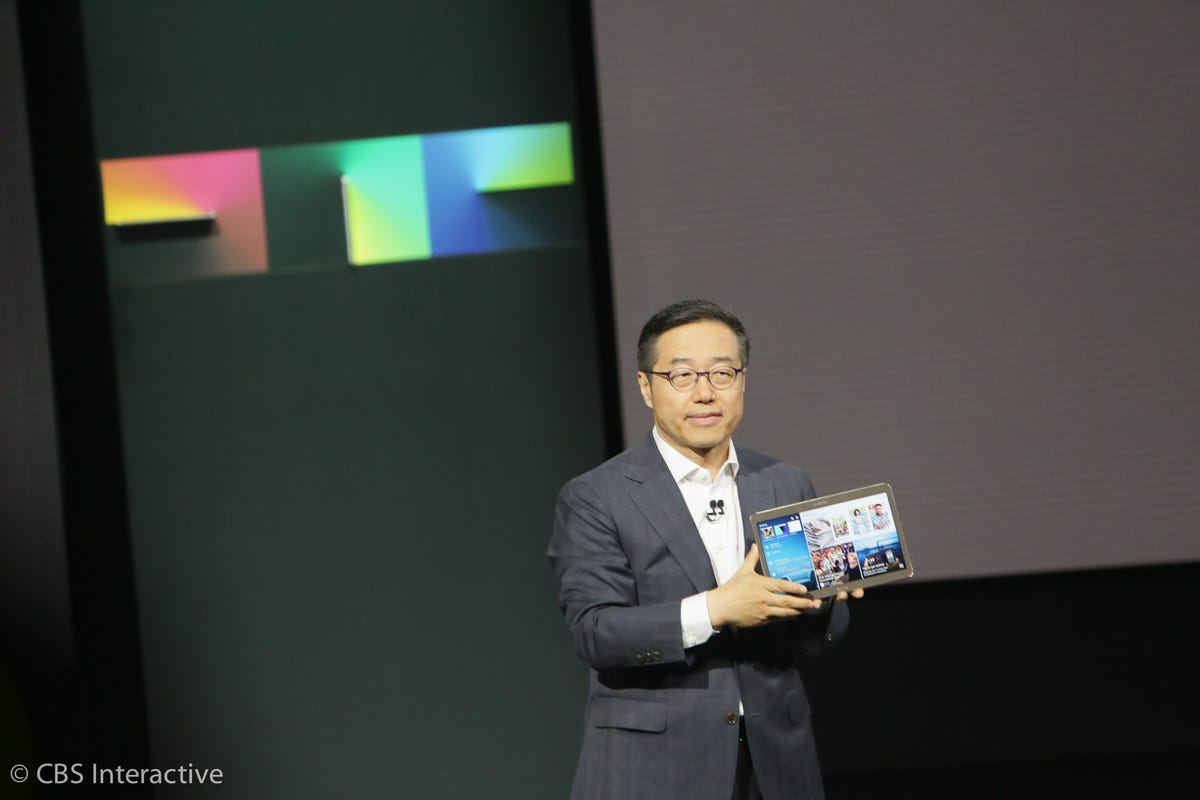
Sarah Tew/CNET
Choosing a Samsung tablet just became a more daunting task — if that’s even possible.
The Korean electronics giant on Thursday unveiled two new tablets, the 8.4- and 10.5-inch Galaxy Tab S devices. Both share traits with Samsung’s flagship Galaxy S phone line and feature a Super AMOLED display, which promises brighter and more vivid colors. Samsung touted the content and partner offers available on the devices, such as 50GB of free Box cloud storage for a limited time and HD videos from Netflix. The smaller screen device will retail for $400 starting in July, while the larger one will start at $500.
That’s all great, but the two new devices bring the number of tablets introduced by Samsung this year to nearly a dozen, if you take into account differences in screen size and branding but not the different storage capacities and colors. Its earlier launches included three new models of its Galaxy Tab (the Tab 4 devices), a new Tab 3 Lite, three new Tab Pro devices, a Galaxy Note Pro , and a Galaxy Tab 4 Nook through a partnership with Barnes & Noble. These come on top of several devices that Samsung released earlier and continues to sell, including its Galaxy Note tablets and Tab 3 devices.
See also
- CNET’s take on the Tab S
- Which one’s best for you?: Samsung Galaxy Tab S vs. Note vs. Pro
- Samsung Galaxy Tab S’ phone-syncing feature SideSync isn’t new, but it is improved
- Galaxy Tab S vs. iPad Air: How Samsung’s latest tablet stacks up
- Behind Samsung’s push to rule the world
Confused yet?
Samsung has long followed the strategy of introducing a wide range of devices to see what catches on with consumers. On the surface, there’s little downside to the company from its scattershot approach. After all, Samsung wants to appeal to as many people as possible, and it doesn’t believe consumers should have only one or two options. It’s one thing, however, to give consumers choice; it’s something else entirely to create so many models that both retailers and consumers have difficulty telling them apart.
“They have created some artificial categories that don’t need to be there,” said Carolina Milanesi, chief of research at Kantar Worldpanel. “Do I really have to have a separate line that allows me to use a pen versus going out and buying a pen? I don’t think so.”
Samsung’s practice differs greatly from its chief rival, Apple. Apple releases two new tablets a year — the iPad (now called iPad Air ) and the iPad Mini — and it continues selling only one older generation of each device. There are rumors the company soon will introduce a larger version — perhaps some sort of hybrid tablet, dubbed the iPad Pro — but even then, Apple’s product range would be nowhere near that of Samsung.
So far, offering a small device line has worked for Apple. The iPad remains the top-selling tablet in the world despite the fact Google’s Android mobile operating system, which Samsung runs on its tablets, is now a more popular mobile operating system. Samsung has been gaining, however. In the first quarter, Apple’s global tablet market share totaled 33 percent, down from 40 percent in the year-ago period, according to IDC. Samsung’s share rose to 22 percent from 18 percent a year earlier as the Korean company continued “to work aggressively with carriers to drive tablet shipments through attractively priced smartphone bundles.”
Samsung Galaxy Tab S: Hands-on with Samsung’s newest tablet (pictures)
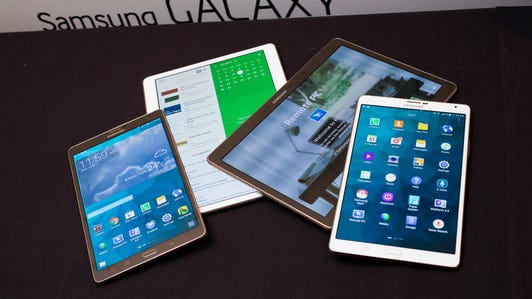

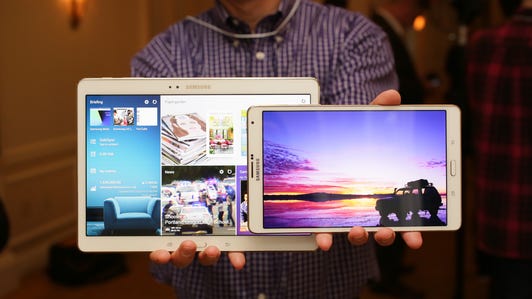



+65 more
Samsung plans to push the Tab S as its main flagship tablet, much like it offers the Galaxy S5 as its flagship smartphone. It believes that will help it overtake Apple to become the world’s biggest tablet vendor, though the company on Thursday declined to provide a time frame for that goal.
Samsung also will continue to sell and support its other Tab and Note devices, but they’ll largely be ancillary to the Tab S. The Note will continue to appeal to people in creative professions or those who need a stylus for certain tasks, while the Tab will be targeted more at budget shoppers. The Pro line will be targeted at business users or anyone hoping to replace a laptop with a tablet.
Samsung believes offering the Tab S will actually make it easier for consumers to decide on a tablet, said Casey Ryan, vice president of products and operations in mobile computing at Samsung Telecommunications America.
“Tab S gives us the ability to simplify [our] story,” he told CNET following the tablet launch Thursday. “With the Tab S in the US market, we have a very…clear message to round out our story.”
Samsung will highlight the vibrant display used in the Tab S, and will talk up other features, such as its Papergarden interactive magazine app. It will also show how users benefit from having multiple Samsung devices, such as being able to access Galaxy S5 features and make phone calls on the tablet, via the smartphone.
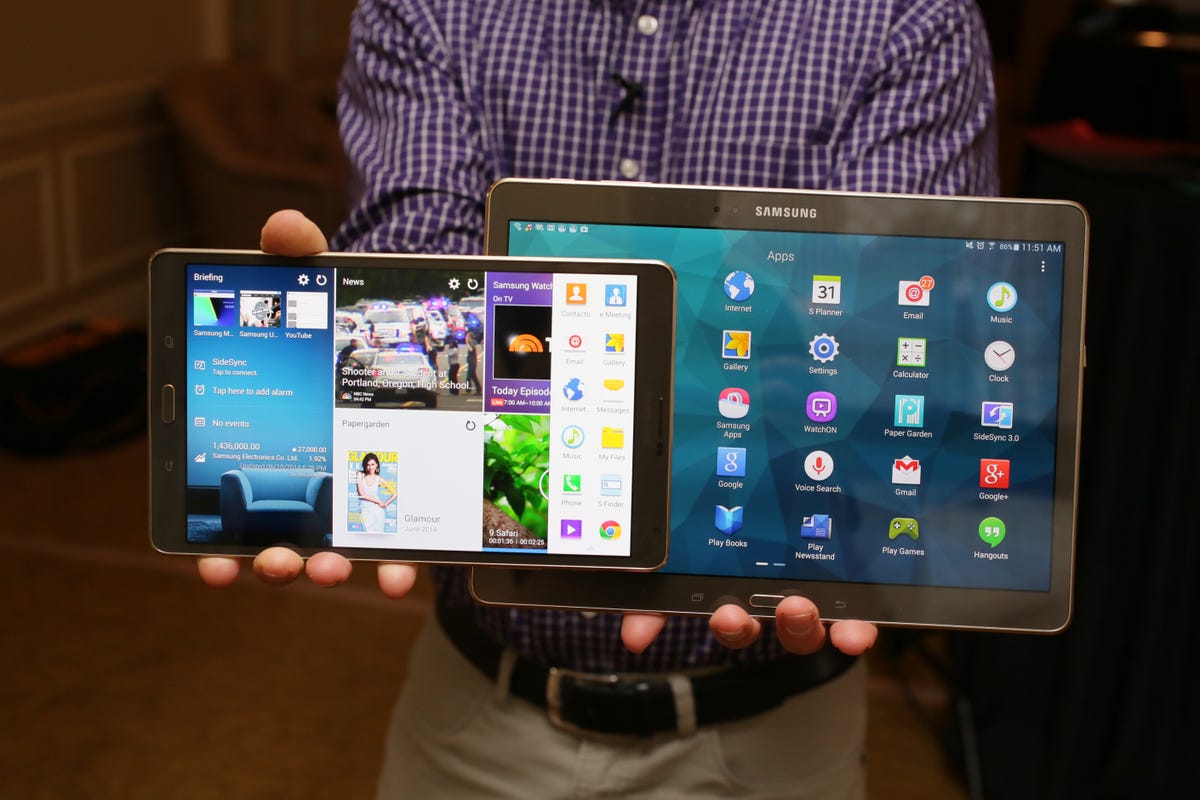

Sarah Tew/CNET
“The biggest selling point for Samsung tablets is if you’re already invested in a Samsung smartphone and you like the features, you can get a similar tablet too,” Jackdaw Research analyst Jan Dawson said.
The Tab S shares more similarities than differences with Samsung’s other tablets. It has similar pricing to the Pro devices, and all of Samsung’s tablets feature its tailored apps and software that comes layered on top of Android. The devices also have similar hardware specs, with one notable exception being the Tab S’s Super AMOLED screen.
Samsung has thrown the “flagship” word around before, including at one prior Galaxy Note launch, so it’s hard to tell if another high-end tablet could emerge later this year, muddying the waters even further (Samsung insists the Tab S will be its highest end product for the year).
It’s unclear whether a more vibrant screen will be enough to sway buyers. It’s hard to deny the vivid colors on the display, but some people may decide lower quality screens are good enough. For those who already own a tablet, the superior display doesn’t necessarily justify an upgrade.
Samsung believes the Tab S will appeal to premium tablet shoppers, both those buying a device for the first time and those upgrading for an older tablet. But right now, it’s mainstream shoppers who have to be convinced they need tablets, not the tech-savvy consumers who scooped up tablets early on.
If Samsung doesn’t make a clear case for the Tab S, it may find consumers confused by their choices end up going with the simpler route of selecting an iPad.
Samsung introduces the Galaxy Tab S (pictures)
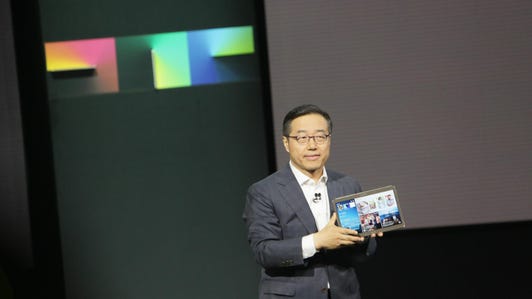

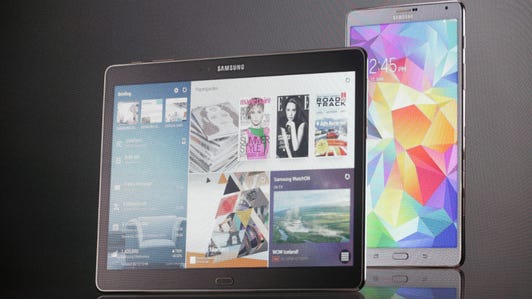

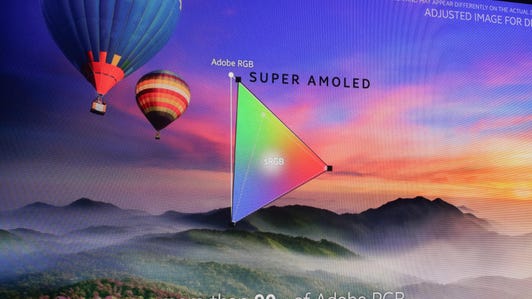

+12 more



